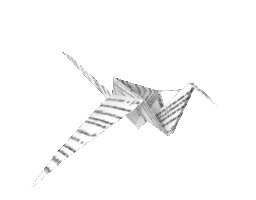Papers authored by Daniel Raleigh

Refreshing results…







Karen L. Maxwell,
David Wildes,
Arash Zarrine-Afsar,
Miguel A. De Los Rios,
Andrew G. Brown,
Claire T. Friel,
Linda Hedberg,
Jia-Cherng Horng,
Diane Bona,
Erik J. Miller,
Alexis Vallée-Bélisle,
Ewan R. G. Main,
Francesco Bemporad,
Linlin Qiu,
Kaare Teilum  and 20 other authors
Download from onlinelibrary.wiley.com
and 20 other authors
Download from onlinelibrary.wiley.com
 and 20 other authors
Download from onlinelibrary.wiley.com
and 20 other authors
Download from onlinelibrary.wiley.com


Vasant Muralidharan  ,
Jaehyun Cho,
Michelle Trester-Zedlitz,
Lukasz Kowalik,
Brian T. Chait,
Daniel P. Raleigh
,
Jaehyun Cho,
Michelle Trester-Zedlitz,
Lukasz Kowalik,
Brian T. Chait,
Daniel P. Raleigh  ,
Tom W. Muir
,
Tom W. Muir
 ,
Jaehyun Cho,
Michelle Trester-Zedlitz,
Lukasz Kowalik,
Brian T. Chait,
Daniel P. Raleigh
,
Jaehyun Cho,
Michelle Trester-Zedlitz,
Lukasz Kowalik,
Brian T. Chait,
Daniel P. Raleigh  ,
Tom W. Muir
,
Tom W. Muir
Domain-Specific Incorporation of Noninvasive Optical Probes into Recombinant Proteins
Download from www.researchgate.net

Farhana A. Chowdhury,
Robert Fairman,
Yuan Bi,
Daniel J. Rigotti,
Daniel P. Raleigh  Download from www.researchgate.net
Download from www.researchgate.net
 Download from www.researchgate.net
Download from www.researchgate.net



Yuefeng Tang,
Daniel J. Rigotti,
Robert Fairman,
Daniel P. Raleigh  Download from www.researchgate.net
Download from www.researchgate.net
 Download from www.researchgate.net
Download from www.researchgate.net



Donna L. Luisi,
Christopher D. Snow,
Jo-Jin Lin,
Zachary S. Hendsch,
Bruce Tidor,
Daniel P. Raleigh  Download from www.researchgate.net
Download from www.researchgate.net
 Download from www.researchgate.net
Download from www.researchgate.net


Missing publications? Search for publications with a matching author name.